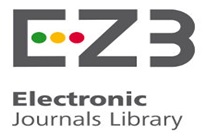PROFILE OF PATIENTS WITH UPPER LIMB AMPUTATION SERVED IN THE CENTER OF REHABILITATION FAG
Keywords:
upper limb amputations, Causes, Prosthesis .Abstract
Introduction: The word originates from the Latin amputation (ambi = around / round putatio = prune/ remove) and is considered a withdrawal, surgical or traumatic, a member of the body. The main reasons for upper limb amputations are traumatic stemming from traffic accidents and accidents at work. The level of amputation is an important factor that directly influences the rehabilitation of the amputee. The primary objective of this study was to identify the main causes of upper limb amputations in patients FAG's Rehabilitation Center. Methodology: This is a field study, epidemiological data collection from medical records for quantitative character, composed of 38 individuals, 28 males and 12 females, consultation of medical records of the patients were in the month of CRF July and August 2014. results: Relation to type of amputation is 60% and 40% transradial amputation transumeral. And the higher incidence of amputation was male, and 70% in males and 30% females, we found that the cause was traumatic causes more amputations resulted in being 44% of accidents at work, road traffic accident 20 %, 15% unspecified traumatic, vascular diseases 13%, 5% household accidents, congenital malformation 3%. Only 2 (5%) patients had bilateral amputation, and 95% do not. Records of assessed only 2 (5%) patients received no implant, and 36 (95%) received, and 50% of patients have adapted and make use of the prosthesis, and 45% do not use because they were not adapted and 5%. Conclusion: From this study, it was possible to identify the main characteristics of amputees CRF- FAG.
Downloads
Download data is not yet available.
Downloads
Issue
Section
TRABALHOS PUBLICADOS
License
Autores que publicam nesta revista concordam com os seguintes termos:- Autores mantém os direitos autorais e concedem à revista o direito de primeira publicação, com o trabalho simultaneamente licenciado sob a Licença Creative Commons Attribution que permite o compartilhamento do trabalho com reconhecimento da autoria e publicação inicial nesta revista.
- Autores têm autorização para assumir contratos adicionais separadamente, para distribuição não-exclusiva da versão do trabalho publicada nesta revista (ex.: publicar em repositório institucional ou como capítulo de livro), com reconhecimento de autoria e publicação inicial nesta revista.
- Autores têm permissão e são estimulados a publicar e distribuir seu trabalho online (ex.: em repositórios institucionais ou na sua página pessoal) a qualquer ponto antes ou durante o processo editorial, já que isso pode gerar alterações produtivas, bem como aumentar o impacto e a citação do trabalho publicado (Veja O Efeito do Acesso Livre).
How to Cite
PROFILE OF PATIENTS WITH UPPER LIMB AMPUTATION SERVED IN THE CENTER OF REHABILITATION FAG. (2016). Fiep Bulletin - Online, 85(1). https://ojs.fiepbulletin.net/fiepbulletin/article/view/85.a1.45









